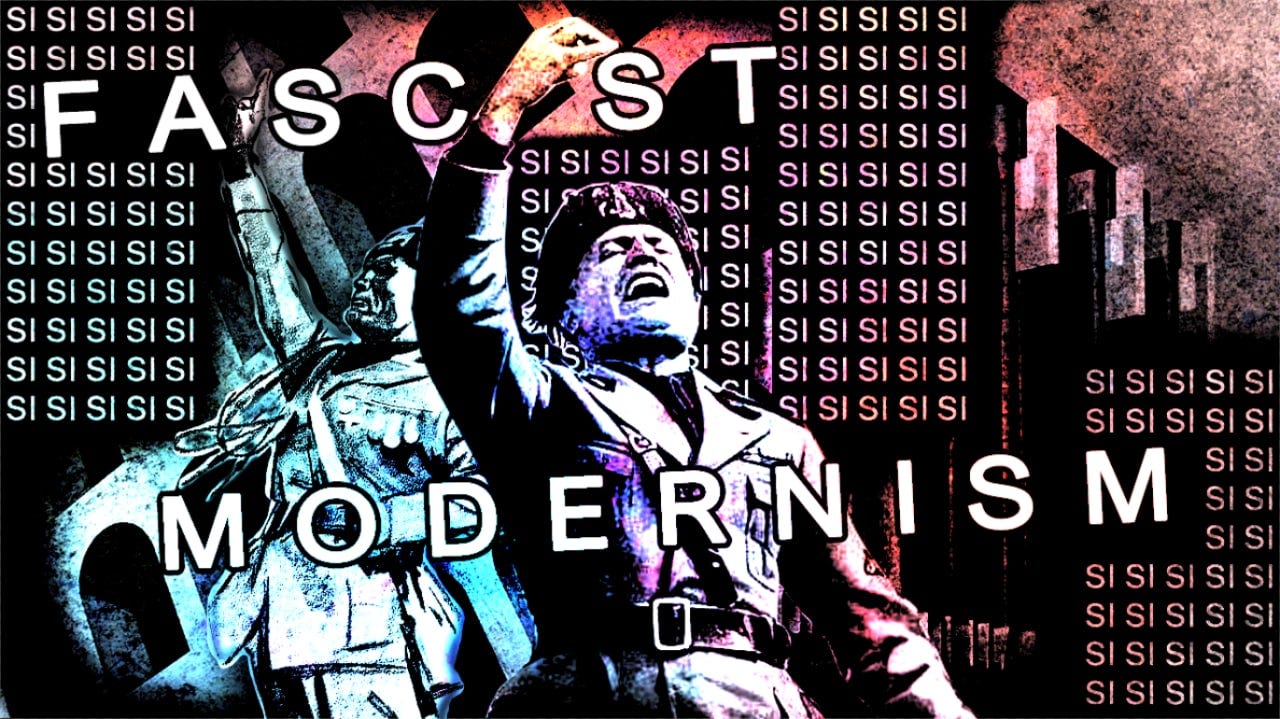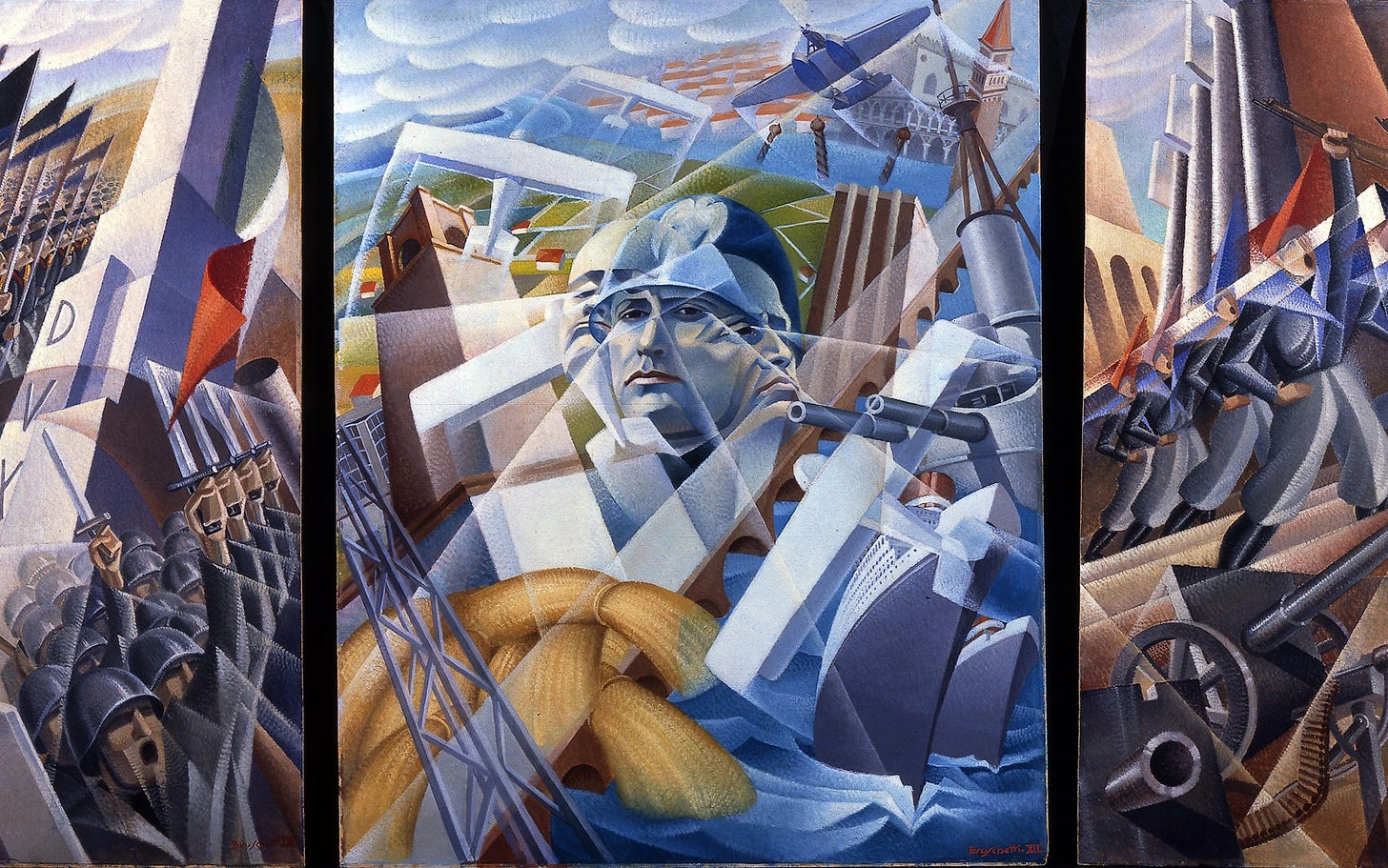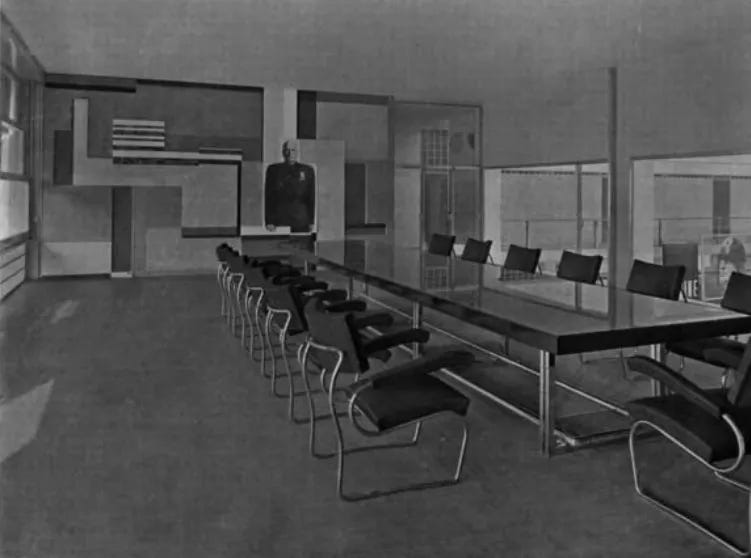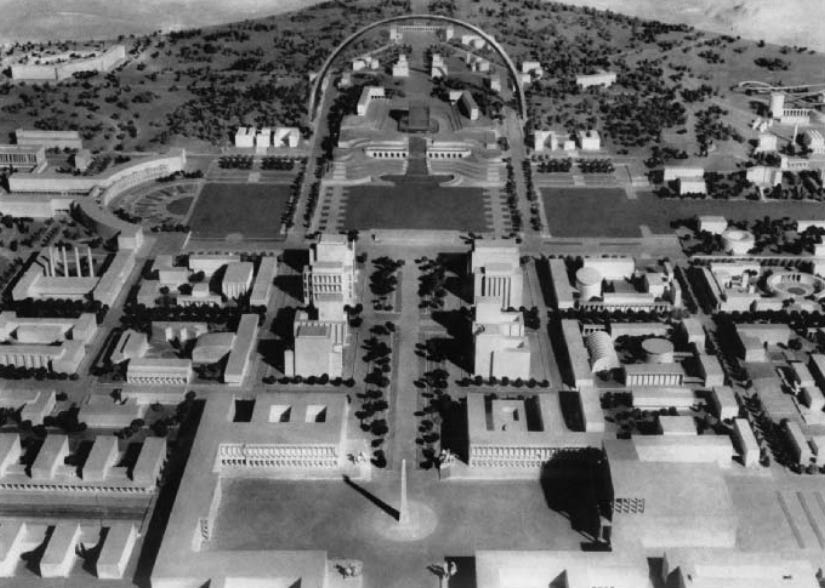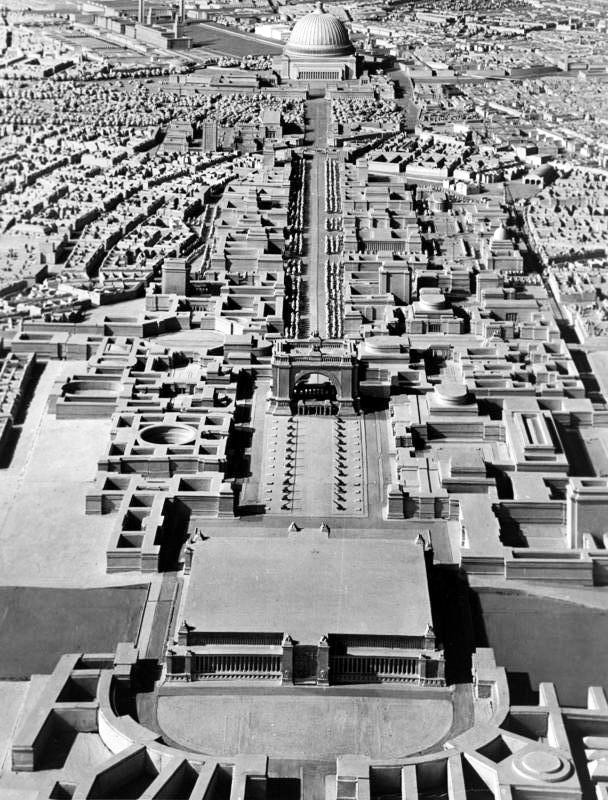The interconnectedness of Fascism and the avant-garde bore significant influence on their perception and interpretation of modernity. Specifically examining the political dimension, we delve into how political modernism emerged alongside the process of modernization. These ideologies aimed to empower individuals to navigate the rapid changes of modernity, allowing them to shape and embrace the evolving world. Both Futurism and Fascism can be seen as manifestations of political modernism, sharing a common cultural foundation.
During the early 1910s, Italian newspapers went as far as equating Benito Mussolini and Filippo Tommaso Marinetti, highlighting their shared values. Fascism's initial attempts to solidify its ideology can be traced back to the concept of Trenchocracy. Rather than 1919, historians believe that Fascism took shape within the trenches of the Great War, embodying the idea of an Aristocracy of the Trenches. This concept emphasized the division between Parasites and Producers, distinguishing those who fought for the nation and made sacrifices from those who did not. It also revealed striking similarities between the beliefs of Futurists and Mussolini. It was within the trenches that Mussolini developed a disdain for the capitalist spirit of comfort and the easy life, recognizing a higher level of unity among compatriots in a common struggle. The influence and similarities between the Fascist movement and the Futurist Ideal led to the inclusion of Futurism as one of the various internal branches of Fascism.
“Democracy, communism, [and] Judaism are equally depressing and traitorous dusty passéisms.”
— F. T. Marinetti quoted in Edinburgh Companion to Ezra Pound and The Arts by Roxana Preda
Futurism, which originated in Milan, Italy in 1909 under Marinetti's leadership, encompassed artistic and social realms alongside its political aspect. The movement attracted notable Italian figures such as Carlo Carrà and Umberto Boccioni. Marinetti's Manifesto of Futurism, a visionary proclamation, expressed a deep admiration for youth, speed, Italian nationalism, technology, conflict, and a rejection of antiquity, religion, and conventionality. These sentiments found their artistic expression. When World War I erupted in 1914, the Futurists rallied behind Italy's decision to enter the war in 1915. Many of them, including Marinetti, enlisted in the military and actively engaged in combat near the Italian-Austrian border. During lulls in battle, Marinetti passionately advocated for war, viewing it as a catalyst for technological advancement and the dismantling of archaic structures. Their affinity for violence and strife as a pathway to the future became evident.
In 1918, Marinetti established the Futurist Political party, which championed Futurism, Republicanism, Nationalism, National Syndicalism, gender equality, and land reform. However, a year later, the party merged with Benito Mussolini's Italian Fasces of Combat, forming the National Fascist party. Like the Futurists, the Italian Fascists embraced nationalism, expansionism, Syndicalism, mass action, and a fervor for struggle. Many Futurists, influenced by George Sorel's ideals, joined the party, actively combating communist, anarchist, and liberal forces in their pursuit of power over Italy. Marinetti played a significant role in the creation of the original Fascist Manifesto, but experienced a falling out with the group in 1920, withdrawing from politics for three years before rejoining upon their rise to power. He became one of the intellectuals to sign the Manifesto of Fascist Intellectuals and engaged in debates regarding the future trajectory of Fascism. In the 1930s, he endeavored to establish Futurism as the official art of the Italian state.
For the Futurists, the future and the new era were shaped by technological advancements, particularly the airplane. Technology set the pace of life, and its acceleration symbolized a departure from the past. The eradication of the past was deemed necessary for a promising future. The Futurists also exemplified the mythical dimension of the emerging Fascist order. They viewed technology as something enchanted, an integral part of a narrative centered around the sacred and productive nation. They embraced technology not despite its destructive potential, but precisely because of it. The destruction of conventional time, propelled and intensified by technology, merged with the sacred realm of eternity.
Fascism drew a dynamic sense of modernity from Futurism, embodying the ideal of "continual revolution." Fascism rejected contentment with achievements or reliance on a conservative approach to maintain power. Instead, it felt compelled to remain faithful to its original essence and project itself into the future, actively constructing new realities. The Fascist aesthetic embraced by the Futurists aligned with their understanding of art's political function and their unwavering faith in the nation as a religious entity. Within the framework of Fascism, Futurist art sought to articulate the profound forces of the modernist spirit through representative symbols embodying a new religious essence. These symbols aimed to unite the present century, binding individuals together under their universal and enduring significance, leaving no one untouched. The avant-garde's artistic expression fueled a deep preoccupation with warfare and the exaltation of violence across all aspects of society.

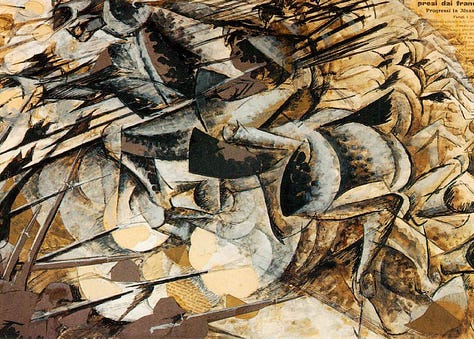

Various Futurist paintings
A painting by Alessandro Bruschetti
Mario Sironi, an artist during the Fascist era, aspired to create a distinct aesthetic aligned with the ideology. Drawing inspiration from various art forms, including classical Romanism, Etruscan tomb sculpture, Ravenna mosaics, and Romanesque art, Sironi sought to infuse Italy's renaissance with the Aryan creative genius by drawing from its earliest sources of civilization. Rooted in the Dionysian cult of Romanità, this approach represented a modernism that mirrored the Fascist ideology.
A painting by Mario Sironi
Sironi perceived his work as a contribution to Fascism's rejection of the Enlightenment and decadent modernity, with the goal of ushering in a new golden age for Italy. He transformed public spaces into venues for the display of artistic expressions that embodied the mythical consciousness of the Fascist era. Sironi believed that by utilizing primitive forms of expression, aesthetic modernism could inspire and move the masses. Fascist modernism and modernist primitivism were thus built on the concept of cultural renewal and revolution. Through his mosaics and murals, Sironi intended to evoke a connection between the fleeting nature of individual life and the sacredness of the collective Italian nation. He aimed to achieve a spiritual transfiguration of individual lives through the metaphorical and transcendent power of art, imbuing them with the timeless essence of Fascism.
Another artist, Ardengo Soffici, exemplified a form of "modernist primitivism" that transported Italians into an imaginary realm distinct from a modernized Rome. This highlighted the tension between aesthetic and political modernism, which arose when the focus shifted from "cultural renewal" to "cultural degeneration." Soffici's artistic journey traced a path from celebrating Toscanità in 1906, through the magical realism of Picasso's Cubism in 1910 and the Futurism of the newspaper "Lacerba" in 1913, before returning to Tuscan Impressionism after World War I. His ultimate concern was the degenerative impact of cosmopolitanism on the Italian avant-garde and society at large, leading to a search for an aesthetic that could provide Italians with a spiritual sense of community. Soffici later advocated for Italian Fascism to prioritize "a new and re-auratised art," celebrating the rootedness of Italians, akin to Maurice Barrès' nationalist concept of "the soil and the dead."

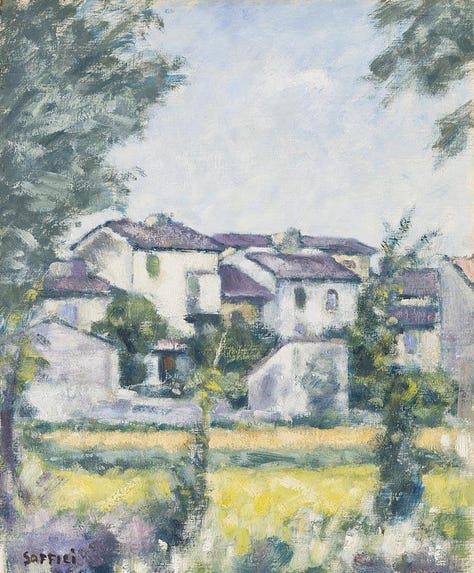

Paintings by Ardengo Soffici
Fascist Italy displayed genuine architectural diversity, attracting many talented architects through its ambitious urban regeneration programs. The modernist principles of the regime's large-scale reconstruction projects and urban planning efforts were evident in the creation of four cities from scratch, such as Pontinia based on Le Corbusier's blueprint. The regime also aimed to transform the colonial capitals of Tripoli and Addis. Classicism and modernism intertwined in the refurbishment of the Palazzo delle Esposizioni in Rome for the Exhibition of The Fascist Revolution, a significant cultural event that merged propaganda, aesthetics, and politics to reshape Italians' perception. By manipulating architecture, displays, symbols, space, and music, the exhibition guided visitors through an immersive experience, transitioning from the chaos of the post-World War I era to the harmony of the new Italian era. The climax of the exhibition was a simulated fascist rally, an otherworldly gathering of "immortal" yet present historical victims. Italian Fascists aimed to defy time, and the most creative architects under Fascism embraced architectural rationalism and the fusion of Mediterranean traditions with modernist and cubist elements.
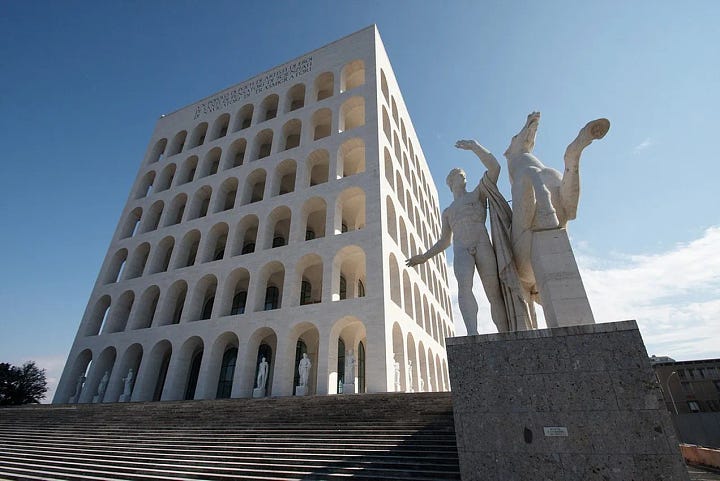
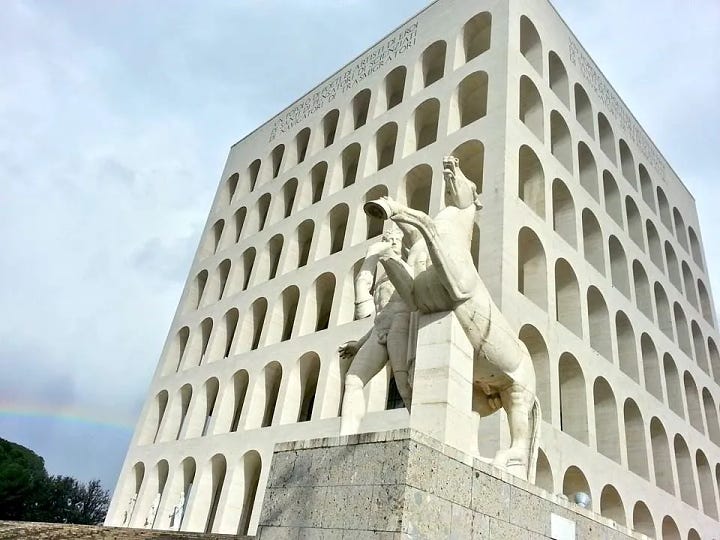
The Stile Littorio monument
During the Fascist regime, the financing of grand projects and the refusal to impose a single aesthetic allowed for the expression of different architectural styles. Giuseppe Terragni, a rationalist architect, showcased his visionary modernism in the design of the Casa del Fascio and the unrealized Danteum. Giuseppe Pagano drew inspiration from Walter Gropius's Bauhaus School for the main building of the Luigi Bocconi University. Marcello Piacentini, on the other hand, worked on the Palazzo del rettorato and later became the chief architect of the EUR project, which aimed to create a modernist capital for Rome.
Meeting room in Casa del Fascio by Giuseppe Terragni. Note the modernist design of the chairs
The EUR project, intended to commemorate Mussolini's regime, aimed to create a modernist capital for Rome by blending classical, baroque, and modernist styles. However, World War II halted the project, leaving it unfinished but leaving a lasting impact on architectural discussions. It was part of broader urban regeneration efforts, attracting talented architects and reflecting the regime's ambition to transform Rome into a symbol of Fascist power and aesthetic modernism. The fusion of classical and modernist elements in the designs represented a desire to combine ancient heritage with a forward-looking vision for Italy.
Model of the EUR complex project showing the implantation of the arch of Adalberto Libera
A showcase of the arch designed by Adalberto Libera for the EUR exhibition. The design seamlessly blends elements of classical, baroque, and modernist styles
The avant-garde also sought to play a role in transforming Italian society, with writers and theater producers aiming to make literature and theater agents of ethical and spiritual regeneration. The Fascist regime subsidized theater productions, reaching millions of people each year, and organized mass spectacles like the BL event in Florence. Massimo Bontempelli, an influential figure in Novecento aesthetics, justified these spectacles as a way to reintroduce the sacred and re-enchant a world damaged by modernity. Italian cinema also underwent a transformation during this period, with attempts to use it as a tool for societal reordering and human recovery. Some films explored alternative modernities within the framework of Fascism's social projects.
The dialectic of tradition within the Fascist discourse has engendered a protracted intellectual deliberation. Within the unfolding of the Fascist Revolution, an inherent agency emerges, bestowing upon it the power to mold the destiny of antiquity, entrenched customs, archaic methodologies, and the rural milieu. In this transformative process, the traditional paradigm of class struggle undergoes a profound transmutation, yielding to a "mystical" struggle that transcends the realm of economic considerations. The proletariat, once occupying the central position, surrenders its prominence to an enigmatic entity—an embodiment of a novel form of aristocracy, akin to the Hegelian concept of spirit. Consequently, the revolution extricates itself from the confines of its social context, ascending towards an ethereal view, wherein it assumes an irrational consciousness that confers validation upon the State.
Following Adolf Hitler's ascent to power as the supreme Führer of Germany, the National Socialists embarked on an anthropological revolution. Their aim was to utilize the power of the state, culture, and technology to create a comprehensive work of art, known as a "Gesamtkunstwerk," using the raw materials of human minds, bodies, and machines. This endeavor would establish a protective canopy for the German people. The vision of the new German race, as expressed by Gottfried Benn, envisioned individuals who were neither gods nor mediocre human beings but emerged from the purity of a new folk.
In The Worker, Ernst Jünger eloquently heralded the arrival of a new type of human being, born from the ancestral roots of the race. This new individual would embody the principles of "total mobilization" and the "total character of work" in the future state. Jünger's words resonated with many National Socialists who were not artists or intellectuals but rather technocrats with a background in training and profession. For them, the evolutionary and modernist act of creation was a vital prerequisite. It was in this context that Julius Evola called for a more radical and fearless form of fascism, an absolute fascism characterized by pure strength and immune to compromise. This perspective invites us to view National Socialism as a modernist phenomenon in the primordialist sense of the term, emphasizing its focus on radical transformation and unwavering dedication.
During the National Socialist regime, Weimar modernist art was purged from German galleries, libraries, cinemas, and museums, echoing the metaphorical "destruction of museums and libraries" depicted in the Futurist Manifesto as a symbol of dismantling the past to pave the way for a glorious future. Notably, the sculptures by Arno Breker, celebrated by traditionalists, portrayed a new kind of man with an expressionist style, embodying physical perfection and readiness to serve the Third Reich. The heroic postures found in National Socialist paintings and statues, along with the idealized depictions of masculinity and femininity. Paintings did not contain reactionary elements; instead, they featured subjects like olympic rowers, soldiers equipped with modern weapons, contemporary aircraft and ships, bombing raids, tank assaults, road bridges, and quarries.
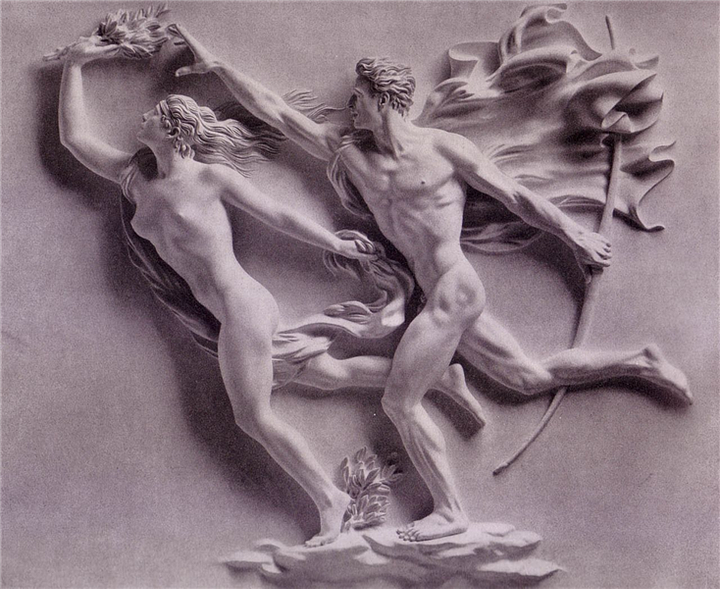
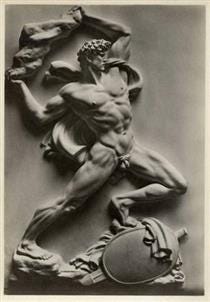
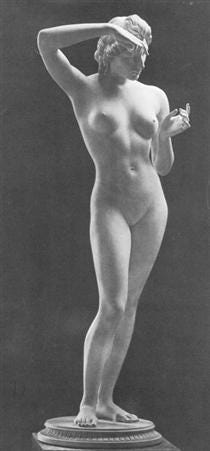

Various sculptures designed by Arno Breker
Hitler at the Front, by Emil Scheib
Despite the totalitarian nature of the regime, a cultural renaissance unfolded in Germany, involving artists, intellectuals, technicians, and performers who, to varying degrees, aligned themselves with National Socialist ideals. Amidst the regime's control, pockets of genuine aesthetic diversity and artistic creativity emerged within the cultural landscape. Art became a vehicle for poetic expressions, serving the National Socialist vision of constructing a new world. The iconoclastic approach of the National Socialists aimed to showcase the regenerative power of art in ushering in a new era, aligning with the fundamental modernist belief in the transformative nature of artistic creation.
The new norms of organic nationalism in Germany dictated that art should be evaluated not only based on Romantic criteria of genius, originality, and advancement of new perspectives, but also as a manifestation of the unique historical and racial identity of the German people and their eternal values. From January 1933 onwards, art was seen as an integral part of German identity, closely linked to the socio-political sphere of life. The National Socialist revolution in art was inseparable from the broader attempt at an "anthropological revolution" that aimed to create an alternative modernity requiring an alternative modernism.
While National Socialist art often incorporated elements of classical aesthetics and German Romanticism, it should not be misconstrued as nostalgic reactionism. Instead, it evoked eternal values necessary for the regeneration of the future. National Socialist culture was idealistic and futurist, serving modernist socio-political objectives even within classical frameworks. It rejected materialism, humanism, and radical individualism, aspiring to bring a new worldview to a nihilistic era. Adolf Hitler himself emphasized that the purpose of art was not to hinder the development of a nation, but to symbolize its living progress. He spoke about the new age working towards creating a new human type, healthier and stronger. He addressed German aesthetic modernists in a dismissive manner, referring to them as "prehistoric pine nuts," and emphasized the timeless qualities of Aryans as embodiments of the new age.
Creating National Socialist culture involved more than just rewarding "good" artwork and condemning "degenerate" art. It encompassed ensuring that German civic buildings embodied eternal values of proportion and scale, as well as delivering inspiring speeches on National Socialism. The goal was to morally, mentally, spiritually, and physically educate the German race through new institutions within a purged country, free from sources of decay and threats to the National Socialist New Order. The overarching aim was to position the German Reich as the supreme industrial, military, and cultural power in the world, which was briefly achieved until 1945. During the Third Reich, classicism was elevated to a position of prominence in German art. However, this "National Socialist Classicism" should not be mistaken for a simple revival of traditional Greco-Roman aesthetics. Instead, it embraced an expressionist style known as stripped classicism, departing from the established norms of antiquity. This new form of classicism prioritized emotional expression over strict adherence to proportion and graceful lines.
Expressionism, with its deliberate deformation of reality, found favor within the Third Reich. Notably, Albert Speer, the chief architect of Nazi Germany, incorporated expressionist elements into his designs. This influence is evident in the monumental scale and expressions found in the buildings and statues of the era. The use of massive polished stone blocks in a symmetrical manner reflects a modernist emphasis on smoothness, geometry, and proportion, contributing to a sense of timelessness and fostering a shared sense of identity among the German people.
Architecture designed by Albert Speer
The book Building Nazi Germany: Place, Space, Architecture, and Ideology delves into the enduring and communal qualities of the urban centers, buildings, and public works constructed during the Third Reich. It explores the grand vision of "Germania," an ambitious architectural project envisioned by the Nazi regime. Germania was intended to be a utopian city, representing the pinnacle of National Socialist architecture. This concept epitomized the titanic and visionary nature of National Socialist aesthetics, aiming to create a physical manifestation of the regime's ideals and instill a sense of unity among the German population.
A model of Adolf Hitler's Germania formulated under the direction of Albert Speer, looking north toward the People's Hall at the top of the frame
In 1936, Adolf Ziegler became the head of the RKdbK, a German painter and politician. In 1937, Goebbels appointed Ziegler as part of a commission to confiscate art they considered dangerous or "degenerate." This included works from various artistic movements such as Impressionism, Expressionism, Dadaism, Surrealism, Futurism, Cubism, Bauhaus, Fauvism, and New Objectivity. Hitler, in his inaugural speech at the Great German Art Exhibition in 1937, expressed his disdain for these movements, claiming they had nothing to do with the German people and were mere "jabbering or deception." Despite Hitler's condemnation, an artistic movement known as Paleo-Futurism emerged within Nazi Germany, as evidenced by German posters from 1941 digitized by Martin Kappler.


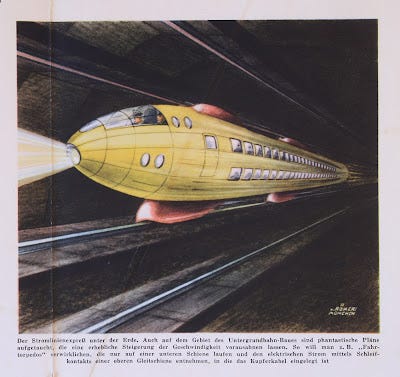
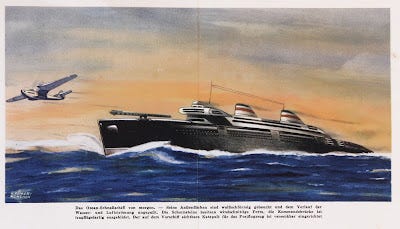
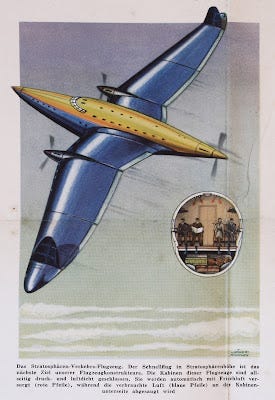
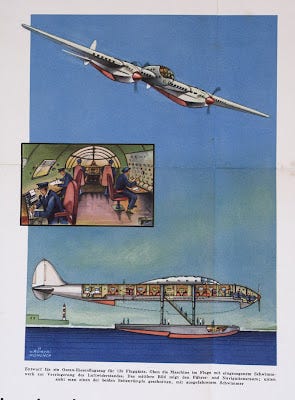

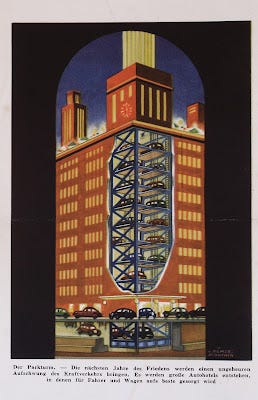
Featured in Durch die weite Welt vol 19
“Today still a venturous plan - tomorrow maybe reality
Technology and economy in the Greater German Reich have gone into an unexpected upswing. The largest network of Autobahn highways has been constructed in just a few years, whole new industries were created and great architectural and urbanistic tasks are about to be realised. Although the war, that was forced upon us, makes it necessary to concentrate our economy on the war efforts, the great plans for the buildup are drawn with the certitude of our victory in mind. Many keen inventions and many thoughts that still seem fantastic today will then be realised. The pictures in this poster show on which branches the engineers are working today and what the technology of tomorrow will bring.“
— Durch die weite Welt vol 19
The concept of "reactionary modernism" assumes immense significance within the scope of our deliberation. Ascribed by the esteemed historian Jeffrey Herf, it offers us entry into the intellectual undercurrents of the interwar epoch. This term encapsulates the very essence of a technologically infused romanticism that pervaded German society, finding its manifestation in the works and ideas of notable intellectuals, namely Ernst Jünger, Oswald Spengler, Carl Schmitt, and Hans Freyer. Nicolas Guilhot expands the horizons of this concept, extending its application to various spheres of Weimar Republic's social fabric, encompassing industry, medicine, mass politics, and social engineering.
Raphel Costra and Modris Eksteins assert that fascism can be apprehended as a modernist movement propelled by a fervent longing for the metamorphosis of society. It aspires to forge a new humanity, mirroring the prevailing narratives of cultural rebirth during the early 20th century. This perspective challenges the conventional notion that fascism emerged in opposition to modernity, instead proposing it as an ardently sought alternative modernity. Roger Griffin further elucidates this standpoint, positing that fascism, as an ideological force, represents a radical departure from liberal and socialist conceptions of modernity. It vehemently rejects both comprehensive liberalism and extreme modernism, perceiving them as fertile grounds for relativism, anomie, subjectivism, and the erosion of definitive meaning and values. Fascism endeavors to anchor individuals resolutely within the confines of the totalitarian state through the strategic manipulation of historical and national myths.
“If people with our sorts of values ruled modernity, everything about this society would be at one level the same, and in every other respect completely different. People would still drive contemporary cars, there'd still be jets, and there'd still be supercomputers and so on, but the texture and the nature of life would be different in every respect. How so? Firstly, cultures would be mono-ethnic. Secondly, there would be a respect for the past glories of our civilisation. Thirdly, we would not preface every attempt to be strong by saying "I'm sorry, I'm sorry for what we have done..." We're not sorry! And we've stepped over the prospect of being sorry.”
— Jonathan Bowden, 11th New Right meeting, London, September 8, 2007



